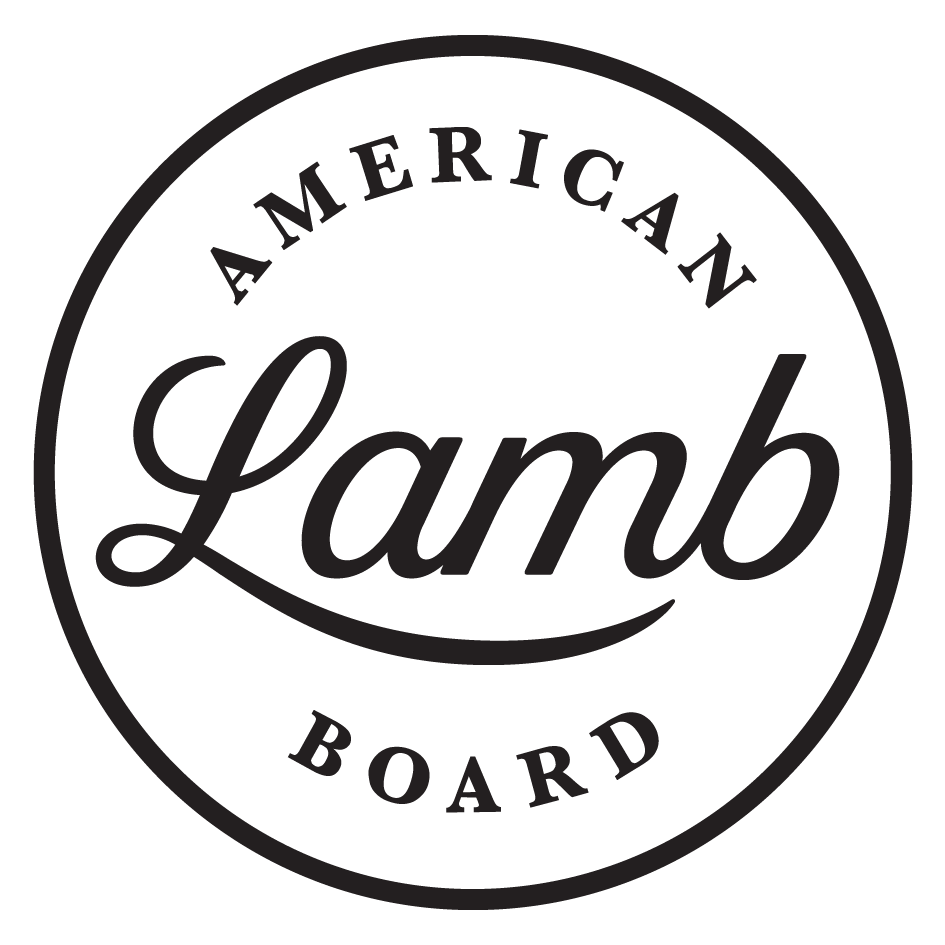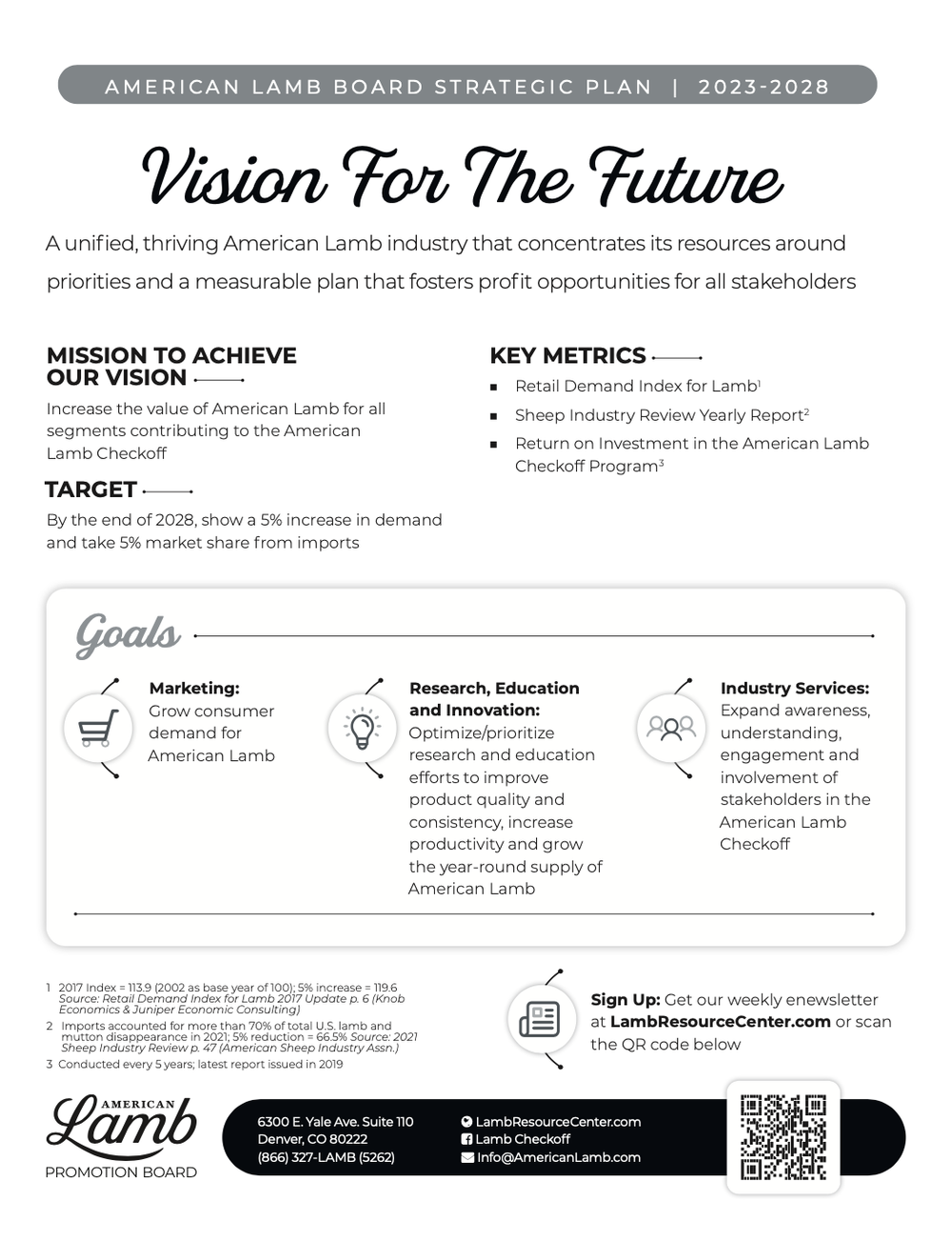ALB Strategic Plan Sets Aggressive Action for Lamb Industry
As the American Lamb Board (ALB) releases its new Strategic Plan, the industry is facing dynamics never seen before. “Instability in global economies and supply chains, consumer uncertainty, the rollercoaster sheep market, increases in non-traditional markets, and pressures from imports are examples of critical issues top of mind with the board,” says Chairman Peter Camino. “We are determined to find proactive ways for the American Lamb Checkoff to help our industry.”
The ALB has outlined an ambitious 2023-2028 plan, including increasing demand for American Lamb by 5% and taking 5% market share from lamb imports by the end of 2028. To that end, the ALB has identified three primary goals:
Marketing: Grow consumer demand for American Lamb
Research, Education & Innovation: Optimize/prioritize research and education efforts to improve product quality and consistency, increase productivity and grow the year-round supply of American Lamb
Industry Services: Expand awareness, understanding, engagement and involvement of stakeholders in the American Lamb Checkoff
“The mission of ALB is to increase the value of American Lamb for all segments that contribute to the American Lamb Checkoff, says ALB Chairman Peter Camino. “We’re setting our sites on a unified, thriving industry that concentrates its resources around priorities and a measurable plan that fosters profit opportunities for all stakeholders.” Camino also pointed out that, like all national checkoff programs, ALB cannot be involved in influencing government policy.
As the world recovers from the Covid pandemic, the American Lamb industry is bouncing back from huge losses within the historically key market for lamb products—fine dining. However, with more consumers returning to eating at home and seeking new food options, this creates opportunities at retail. The 2023-2028 ALB Strategic Plan calls out additional opportunities, such as cultural preferences and consumer desires for local, sustainable foods.
Consumer interest in lamb is coming at a time when US flock numbers are declining. If American Lamb can’t fill the need for products and price points, that opens the doors for imports. Lamb coming in from competitors such as Australia and New Zealand has a definite price advantage, but also a consistent supply. “Lamb imports have gained ground for a complex set of reasons, some which are out of the American Lamb Checkoff’s scope. But we are determined to drive hard at what we can help with—demand, productivity and product quality,” says ALB Chairman Peter Camino.

